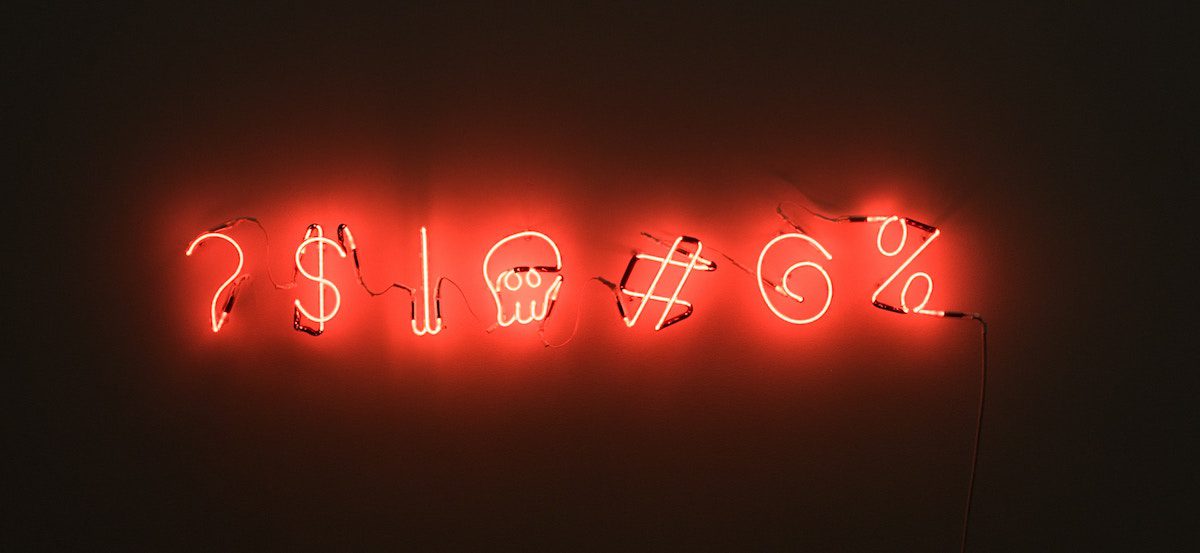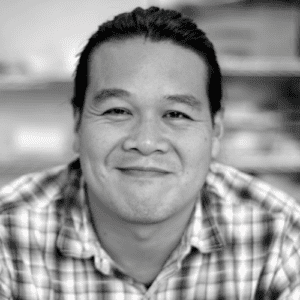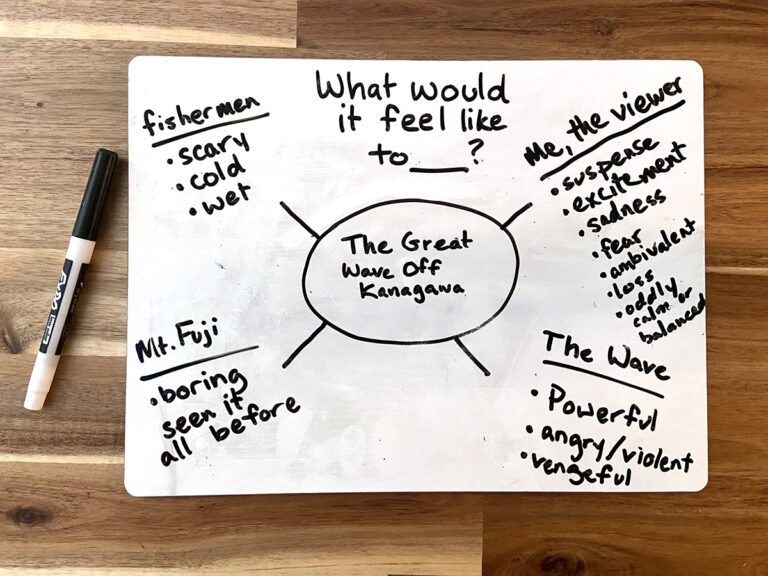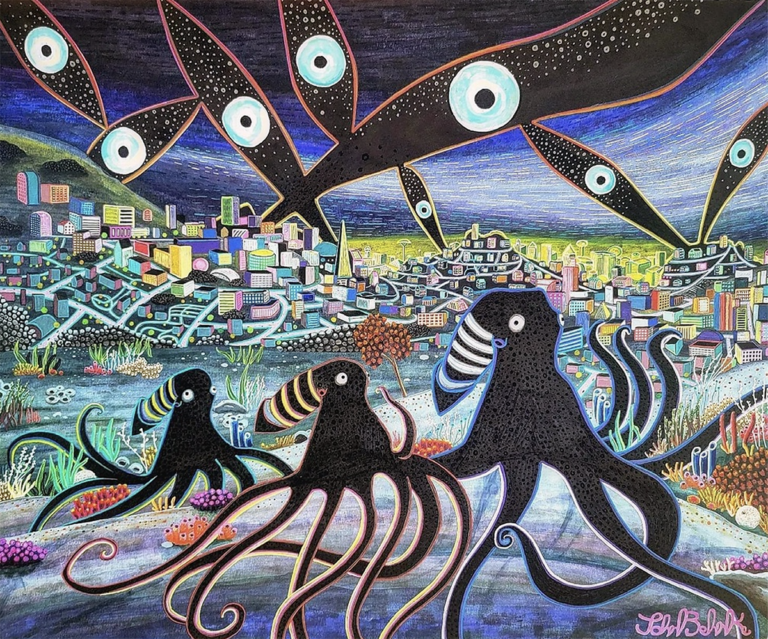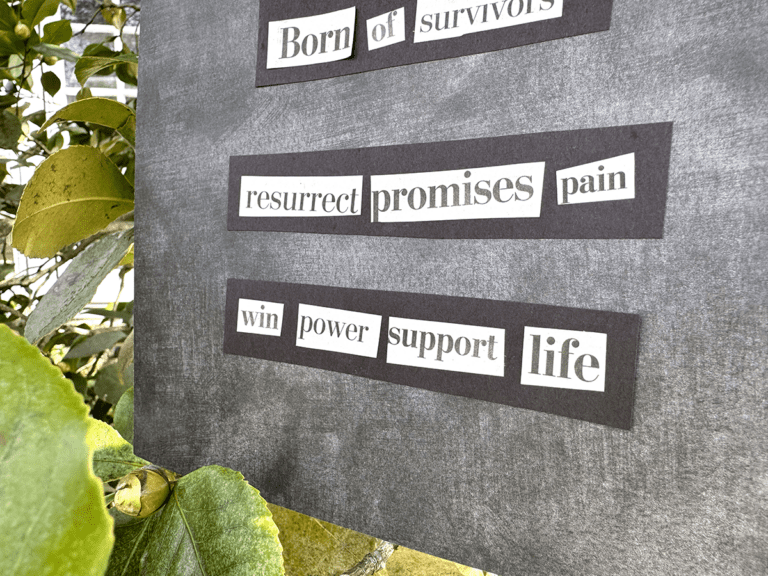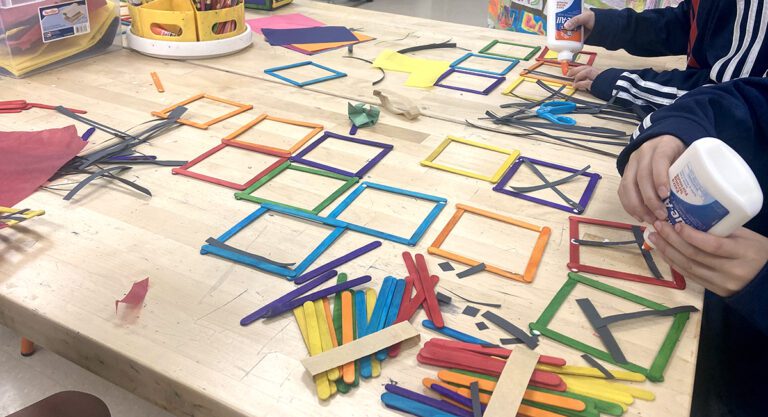Some projects lend themselves to controversy. Other times, controversial subject matter can sneak up on you unexpectedly. Schools may not be excited to court controversy, but I am. From my perspective, when students create challenging work that pushes boundaries, I’ve done my job!
It’s exciting to see students find their voice to express something personal and meaningful and create pieces that spark discussion.
In my classroom, I’m interested in examining ways artists have stirred the pot. I use controversial works to support students in expressing their own perspectives or taking a stand. The goal is to have students be able to engage in conversation about the work through thoughtful investigation and questioning.
Of course, this doesn’t mean you allow students to blunder around insulting and offending at will. You must set some ground rules and engage in discussion throughout the process.
Let’s look at some controversial work, how you might present it to your students, and how you can address potentially inflammatory work with transparency and dialogue.
Work to Start Discussion in Your Classroom
As artists, making work that incites an emotional response is powerful and impactful. But, sometimes, that same work can be seen as divisive or polarizing. Art is a vehicle for change. For young artists just finding their voices, it is a powerful tool.
The Guerilla Girls
One of the first examples presented to me as controversial was this piece by the Guerilla Girls.
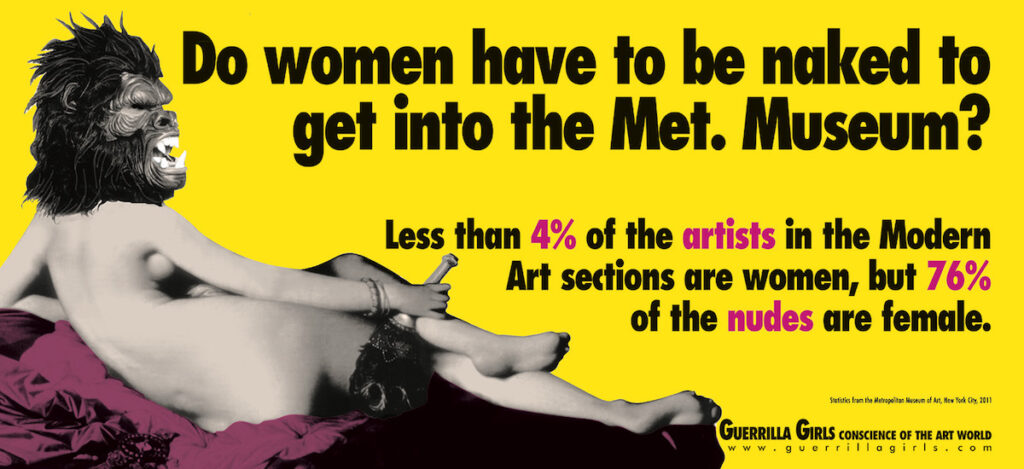
This work was inspired by a survey of paintings and sculptures at the Museum of Modern Art in New York in 1984. The anonymous group of female artists began a poster campaign highlighting the fact that only 13 of the 169 artists at the museum were women, while the majority of the nude subjects of art at the museum were female.
The Guerilla Girls have continued to pursue their agenda of exposing gender, race, and other biases within the art world. I love showing their work to students because it helps frame ways to bring attention to an issue with both humor and hard facts. If students decide to address a topic, they have to have done their research.
Contemporary Social Movements
Contemporary issues like Black Lives Matter, #Metoo, and March for Our Lives also get students thinking. Showing students how these movements are being documented in different ways can start deep discussions. We talk about how a photographer or artist’s background and biases can influence how events are portrayed and remembered throughout history.
This photo of Ieshia Evans during a protest in Baton Rouge was taken by Photographer Jonathan Bachman and has become iconic.

It’s been dissected and reinterpreted and shows how powerful a single photograph can be in documenting a cause. Students in my class investigate projects of their own which bring light to topics that are close to them. These types of projects can be vulnerable and revealing for students. At the same time, this type of work can show students how powerful their voices can be.
Set Students Up For Success
When discussing work like that mentioned above, it’s important to do some work upfront to set your students up for success.
Here are three points to keep in mind:
- Be sure to teach your students how to research and present their vision clearly.
Clear and thoughtful work is work you and your students can stand behind. - Think through your projects and assignments to anticipate issues.
When developing your curriculum, it’s helpful to know at what points controversy might arise. Staying ahead of issues allows you to diffuse potentially difficult situations before they occur. - Encourage students to have a dialogue about their work with one another.
It’s important for you to be able to talk to your students about their work. It’s also important for your students to be able to talk to each other about their work. Be sure to model how to have these conversations appropriately, especially when students hold different viewpoints about a subject.
But even with the front-loaded approach, things still might spin away from you.
As these challenges emerge, you might wrestle with some of these questions:
- What is your responsibility as an educator when controversy strikes?
- Are you beholden to the student and their work which you’ve helped nurture along? Or, can your position change on the work as it develops?
- Are you responsible for the school and its public image if the work was to go public?
As I worked through these questions, this was the point where my department and I engaged my school in creating a process for addressing challenging student artwork. It’s since been implemented several times.
How to Address Controversial Work at School
Different people have different opinions about what constitutes controversial work, and the place you may encounter the most resistance might be from your administration. Personally, I believe a healthy tension with administration means you’re doing your job. You are teaching your students to think and question, and that will likely push those higher up. But, it’s important to remember they have a very different role from you in the school. They’re thinking of the big picture and the school community at large. Therefore, it’s important to come to a solution that works for both parties and set a protocol for addressing these situations.
![]()
7 Steps to Address Challenging Work
When I encountered pushback around some controversial work created in my room, it led to the creation of some ground rules and processes to help address similar situations in the future.
The steps we created begin before work even arises to the level of administrative discussion. It’s important to note I work at the secondary level. Your steps and key players may look different depending on what level you teach.
Here are the seven steps:
- Engage students in discussion.
As students begin to work, discuss the appropriateness of the work from their perspective. Then, encourage them to view the work from a variety of perspectives to stimulate conversation. - Connect with colleagues and the wider community.
Take the work to colleagues both within and outside of your department to get their thoughts. Consider engaging members of the community who may find the work particularly challenging. Encourage the student artist(s) to be involved in these discussions. - Connect with the Department Chair.
If, after the previous conversations the teacher and student(s) still feel strongly about presenting the work to the wider community, bring in the Department Chair. The Chair can act in either a supporting role or as a direct liaison to the Administrative Team to facilitate potential next steps. - Convene with your Fine Arts Department.
At this point, meet as a team to review input made by staff, faculty, community members, and students to determine if the work can be viewed by the school community. If the determination is that it cannot be displayed at school, work to identify other, more appropriate spaces to display the work. Involved students are strongly encouraged to join this discussion with the Fine Arts Department. - Consult with the Administrative Team.
Once you have a good feeling about what others are thinking, it’s time to meet with your Administrative Team. This meeting will determine whether or not the proposed work is consistent with the school’s mission, vision, and values. You, your student(s), and the Department Chair can all be at this meeting to present the work. - Make a final determination.
A final determination regarding the presentation of the work and potential next steps will be made by the Administrative Team. If the work is deemed not inclusive of the school’s mission, vision, and values, the Administrative Team will work in concert with the student, faculty member, and Department Chair to resolve the conversation in a manner fair, open, honest, and respectful to all involved parties. - Hang the work.
Once the work has been displayed, the school supports keeping the work displayed. If controversy arises in the community, the Administrative Team will work with all stakeholders to determine the next best steps.
A key component of this process is keeping the students involved throughout. Having them engage in the dialogue helps keep them from feeling like they are bystanders in the process. This way, they can voice their perspective and concerns. This process formalized some steps to take with our administration. Though it isn’t perfect and feels clunky at times, it has helped to keep an open dialogue at the school around artwork that challenges and pushes our understanding of the world- which is ultimately what we encourage our students to do.
How does your school address controversial artwork?
What strategies have you used in the classroom to build student voice and agency around controversial subjects?
Magazine articles and podcasts are opinions of professional education contributors and do not necessarily represent the position of the Art of Education University (AOEU) or its academic offerings. Contributors use terms in the way they are most often talked about in the scope of their educational experiences.
